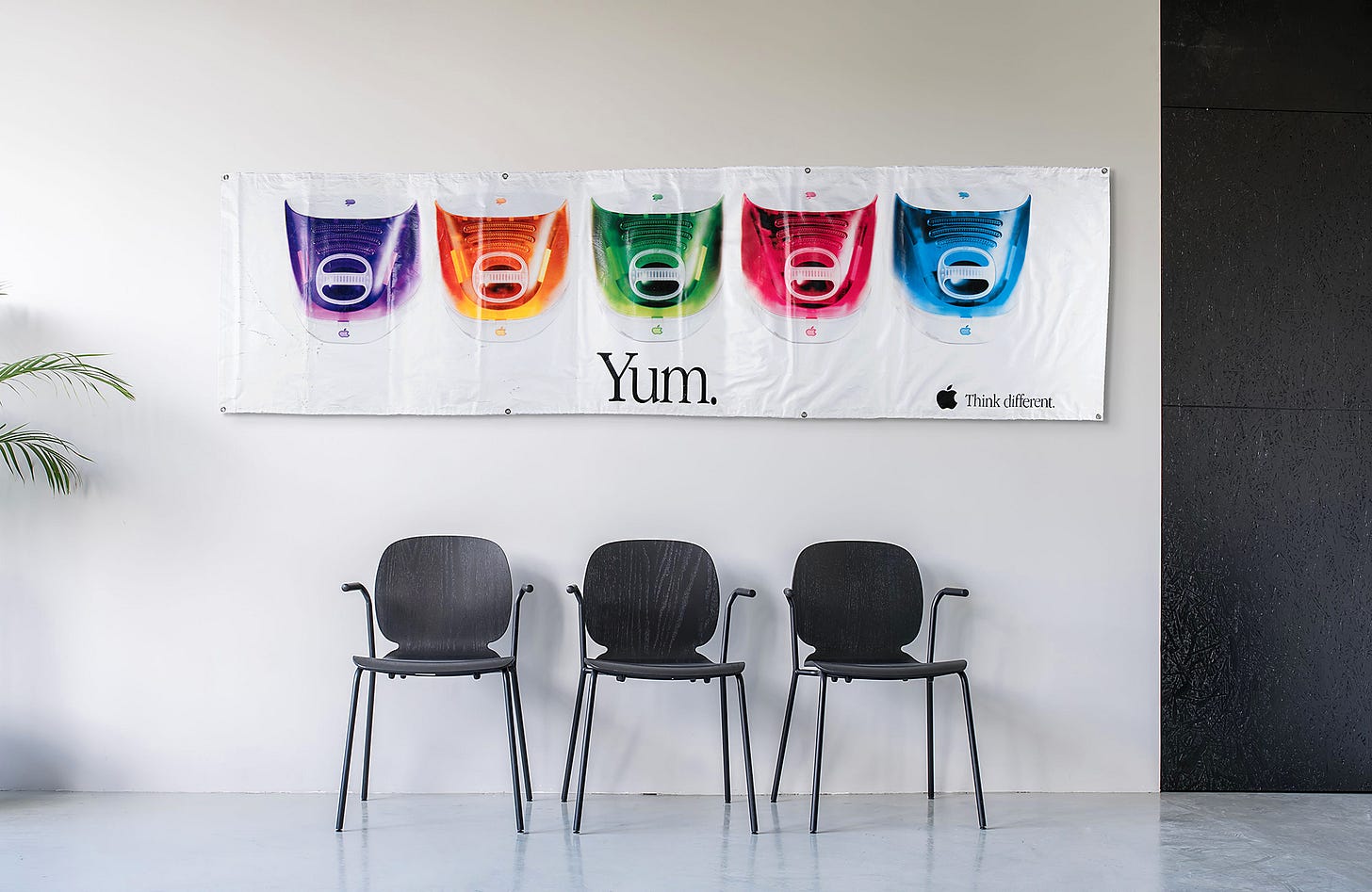The Parts They Don't Want You to Remember About Apple's Greatest Turnaround
What it felt like to be on Steve's winning team after he gutted the company
There’s a version of the Apple turnaround story that gets told at keynotes and in clean little coffee table books. The official version. The one with the rainbow iMacs, the “Think Different” campaign, and the triumphant return of Steve Jobs in ’97.
But there’s another version—less polished, more personal—that rarely gets told. Not because it isn’t important. But because some people would rather it stay buried.
I joined Apple in 1999. Not during the chaos—but right after it. The company had already been gutted. The printer division was dead. Beige was dead. The product line had been slashed down to four quadrants. And those who weren’t aligned with the new mission had already been shown the door.
The storm had passed. But the air still crackled with what had just happened.
My critics are always people who have something to gain by preventing the public from having key takeaways about Apple's biggest turnaround success story.
There are simply people who don't want you to know how being on Steve's winning team felt. Many of whom were laid off in '98 when SJ gutted the company, streamlined the product line and eliminated beige and the printer division.
Inside Apple in ’99, you could feel it: a kind of raw, post-revolution energy. The war was over, and the survivors were starting to build again. Not cautiously. Not tentatively. But with boldness. With focus. With fire.
And if you were fortunate enough to be invited in at that moment, you knew you weren’t just taking a job—you were stepping onto the winning team.
Keep reading with a 7-day free trial
Subscribe to Skeuomorphic Design: Lessons from Apple's Golden Era to keep reading this post and get 7 days of free access to the full post archives.






